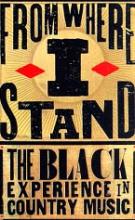NOTE: This originally appeared in Oxford American, issue #21/22 (1997), revised May 2000 by the author.
Black people began adapting white music to their own ends almost as soon as they arrived in America. The earliest African-Americans, forced into slavery in New England around 1619, were allowed but one communal respite from work: the white man's church. Blacks sang the same religious musics as whites, most of it written by Methodist ministers from England and brought to this country by missionaries. Before long, blacks has grown especially partial to the stern but redemptive hymns of Dr. Isaac Watts, which were published in America during the Great Awakening of the 1730s. Those hymns remained the backbone of black gospel music all the way into the 1950's and '60's.
The musical miscegenation that began in those New England churches is arguably not as vital as it once was, but it continues today in various forms, from white rap, and black hip-hop that samples hard-rock guitar solos, to the blues that have been appropriated by whites and turned into simple party-down music since being abandoned by most blacks. As the blues example suggests, such interplay always has its ups and downs. You won't find many black people who recall with affection minstrelsy and blackface, the popular musical forms of their time, and you also won't find many whites who'll admit today that a performance at the House of Blues is the current equivalent of those forms.
In the 1920's, the earliest days of the recording business, cross-pollination was still going strong. Consider the instruments used by blacks and whites in their traditional musics. The fiddle, small and portable came to the U.S. with the earliest settlers, and blacks slowly adapted it. The banjo, originally an African instrument, was popularized among whites via minstrel shows and, by the 1830's, was common in country fiddle bands. The guitar, a European instrument first used in this country by well-bred Northerners, was made more accessible by the Sears catalog. Soon after the turn of the century, black railroad workers took the guitar into the Southern mountains, and whites picked it up too. The Dallas bluesman Blind Lemon Jefferson cut the first steel-guitar record in 1926, and West Virginian Frank Hutchison five months later with the first country record to use steel. Whatever they started as, these were not white or black, country or blues instruments; they were Southern instruments, the sound of the Mississippi Delta, the Tennessee mountains, and the Kentucky bluegrass country. Traditional songs likewise bounced back and forth between the races.
